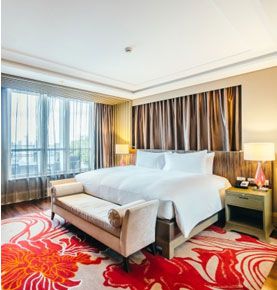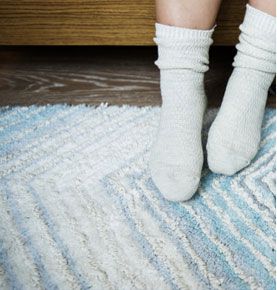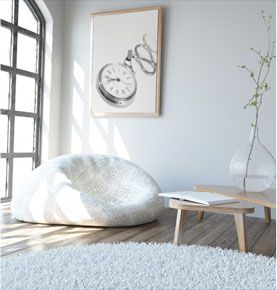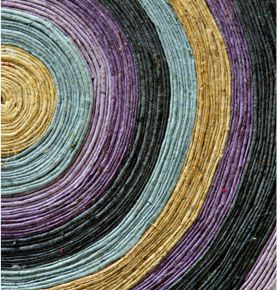
Layering Rugs: Techniques for Depth and Texture
Rugs, they're more than just floor coverings, they define spaces and add personality to your homes. But what if you could elevate their impact even further? Enter the captivating world of layering rugs. This design technique isn't just about placing one rug on top of another; it's about creating a symphony of texture, depth, and visual interest that can transform any room.
Whether you're aiming for cosy warmth in your living room or a touch of flair in your bedroom, mastering the art of rug layering opens up a realm of creative possibilities. Let’s dive into some essential techniques and tips to help you weave this magic into your space.
Why Layer Rugs?
Before we get into the "how," let's appreciate the "why." Layering rugs offers a multitude of design advantages:
- Adds Depth and Dimension: By introducing varying heights and textures, layered rugs break up the monotony of a single floor covering, creating a more dynamic and visually engaging space.
- Enhances Texture: Combining different rug materials – think a chunky wool beneath a smooth hide – adds tactile interest and a luxurious feel underfoot.
- Defines Zones: In open-plan living areas, layering rugs can effectively outline different functional zones, such as a seating area or a dining space.
- Introduces Pattern and colour: Layering allows you to play with bolder patterns or colours in a smaller top rug, grounded by a more neutral base.
- Creates Warmth and Comfort: Especially in rooms with hard flooring, layering rugs instantly adds a layer of cosy insulation and sound absorption.
- Hides Imperfections: Strategically placed top rugs can cleverly conceal minor floor flaws or stains on a larger, existing rug.
- Express Personal Style: Layering is a fantastic way to showcase your unique taste and curate a space that truly reflects your personality
Essential Techniques and Tips
Now for the exciting part – how to actually layer rugs like a design pro! Here are some key considerations:
1. Start with the Foundation: Choosing Your Base Rug
Think of your bottom rug as the canvas. It should generally be larger and more neutral to anchor the space. Consider these options:
- Natural Fibre Rugs: Jute and sisal offer a fantastic textural base and a neutral palette. Their durability makes them ideal for high-traffic areas.
- Large, Solid-Coloured Area Rugs: A simple, unpatterned rug in a complimentary or neutral tone provides a versatile foundation.
- Existing Rugs: Don't underestimate what you already have! A larger rug that feels a bit "blah" on its own can gain new life when layered.
2. Selecting Your Top Layer
This is where you can inject more personality and flair. Consider these factors:
- Size Matters: The top rug should be significantly smaller than the base rug, allowing a generous border of the bottom layer to be visible. Think of it as a smaller island floating on a larger sea. Common placements include partially overlapping a coffee table or defining a seating arrangement.
- Texture Contrast: Play with different textures for visual and tactile interest. Pair a flat weave with a shag, a natural fibre with a plush wool, or a smooth hide with a textured kilim.
- Pattern Play: Don't be afraid to mix patterns, but do it thoughtfully. A general rule is to vary the scale of the patterns. For example, a large geometric pattern on the base rug can be beautifully complemented by a smaller floral or abstract design on top.
- Colour Harmony: Choose colours that either compliment each other or create a deliberate contrast. Consider your existing furniture and decor to ensure a cohesive look. You might opt for analogous colours (next to each other on the colour wheel) for a harmonious feel or complimentary colours (opposite each other) for a bolder statement.
3. Mastering the Placement: Where and How to Layer
The placement of your layered rugs is crucial for achieving the desired effect:
- Living Room: Layering under the main seating area is a classic choice. Position the top rug so that at least the front legs of your sofa and armchairs rest on it, anchoring the furniture grouping.
- Bedroom: Place a smaller, softer rug partially under the bed, extending out on one or both sides. This adds warmth and a luxurious feel underfoot.
- Entryway: A smaller, patterned rug layered on a durable base can create a welcoming and stylish first impression.
- Hallways: Layering runners can add visual interest to long, narrow spaces.
4. Practical Considerations:
- Rug Thickness: Be mindful of the combined thickness of your rugs to avoid tripping hazards, especially near doorways.
- Maintenance: Consider how easy each rug will be to clean, especially if layering in high-traffic areas.
Finding Your Perfect Layers: Inspiration for Every Style
No matter your aesthetic, there's a rug layering combination waiting to be discovered:
- Modern Minimalism: A textured natural fibre rug layered with a smaller, geometric-patterned rug in muted tones.
- Bohemian Chic: A vibrant, patterned kilim or vintage rug layered over a larger, neutral jute or woven rug.
- Traditional Elegance: A classic Persian or Oriental rug layered atop a larger, solid-coloured wool rug.
- Coastal Cool: A striped or subtly patterned flat weave layered with a smaller, textured rug in natural hues like cream or blue.
Rugs Galore and Finding Your Match
Whether you're seeking modern rugs with clean lines, timeless traditional rugs, or a unique statement piece to be your top layer, exploring a diverse selection is key. For those in Melbourne, be sure to check out Rugs Galore in Blackburn and Dandenong to find the perfect textures, patterns, and sizes to bring your layering vision to life. You'll discover a world of possibilities waiting to transform your floors.
Conclusion
The art of rug layering offers a dynamic approach to elevate your home decor, adding both visual depth and tactile warmth. By embracing these layering rugs decor tips and understanding the best way to layer area rugs, you can transform any room. Whether you're seeking rug layering ideas for your living room or exploring the nuances of rug layering size, remember that thoughtful combinations of modern rugs and traditional rugs can create truly unique spaces.
Following these tips for rug layering will guide you in harmonising textures and patterns to achieve a sophisticated look. Ultimately, knowing how to layer Rugs is a valuable skill that allows you to personalise your space and showcase your individual style. Layering rugs is an art form, and like any art, it's about expressing your unique vision and creating a home that feels both beautiful and inviting. So go ahead, unleash your inner designer, and discover the transformative power of layered rugs!











